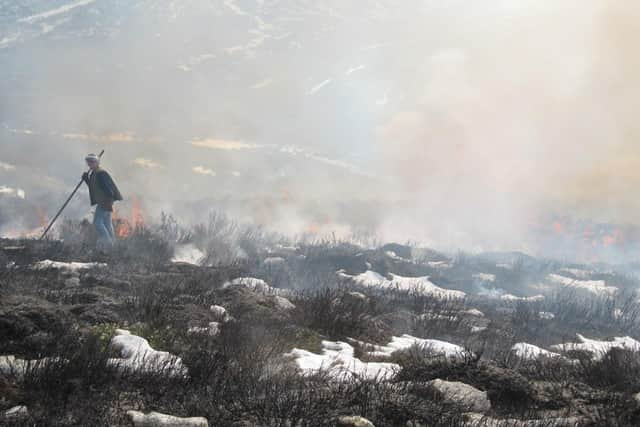Six months of Defra investigations into 1,584 reports of illegal moors fires dismisses all but one complaint
The official investigation followed a wave of allegations from campaigners that extensive areas of grouse moor were being set on fire on deep peat and were therefore in breach of the new law.
In the past eighteen months, more than 1,500 reports of illegal burning have been made to the regulator.
Advertisement
Hide AdAdvertisement
Hide AdSir Robert Goodwill MP, Chair of the Environment, Food and Rural Affairs Committee, raised the matter in a written question to Parliament.


The response revealed that there have been 1,584 individual reports of alleged breaches of the Heather and Grass Burning (England) Regulations since the regulations came into force on May 1 2021. Of these, 1,022 could not be assessed because they included insufficient location information, while 490 reports were assessed by Defra and Natural England and were established to be either duplicate reports or not in breach of the regulations.
Only one fire was found to be a technical breach of the guidelines where a single fire set on heather growing on shallow peat had encroached onto heather growing on pockets of deeper peat.
One estate has therefore received a formal warning.
Campaigners including RSPB, Greenpeace and Wild Moors urged members of the public to report all instances of heather burning to them.
Advertisement
Hide AdAdvertisement
Hide AdThe reports were then passed on to Natural England and Defra as formal complaints.
The Moorland Association said it had resulted in mass confusion with people being led to believe legitimate heather burning, carried out for conservation purposes, is against the law and condemned what they said was a “deliberate exercise in alarming the public and demonising a legitimate land management practice.”
Amanda Anderson, director of the Moorland Association, said: “The allegations levelled at trained and skilled grouse moor managers have proven to be false, misleading and fundamentally flawed. The results of the investigation show that our members are committed to best practice and abide by the new regulations. We do not burn peat and we do not deliberately damage moorland habitat.”
Carefully controlled vegetation burning is a tool used in the management of the uplands, which can produce a range of benefits for wildlife and for wider society, including reduced wildfire risk, which is vital due to the impact of climate change.
Advertisement
Hide AdAdvertisement
Hide AdPrescribed burning aims to achieve a low intensity and small-scale 'cool burn' which removes the heather canopy but does not burn the underlying peat or moss layer.
"The allegations of a blatant disregard of new laws have been shown to be utterly wrong and those involved should be ashamed of this deliberate campaign of misinformation”, added Ms Anderson.
A further 72 reports, relating to the current burning season, which began on October 1 , have been submitted by the campaigners and will therefore also be assessed by Defra and Natural England.
